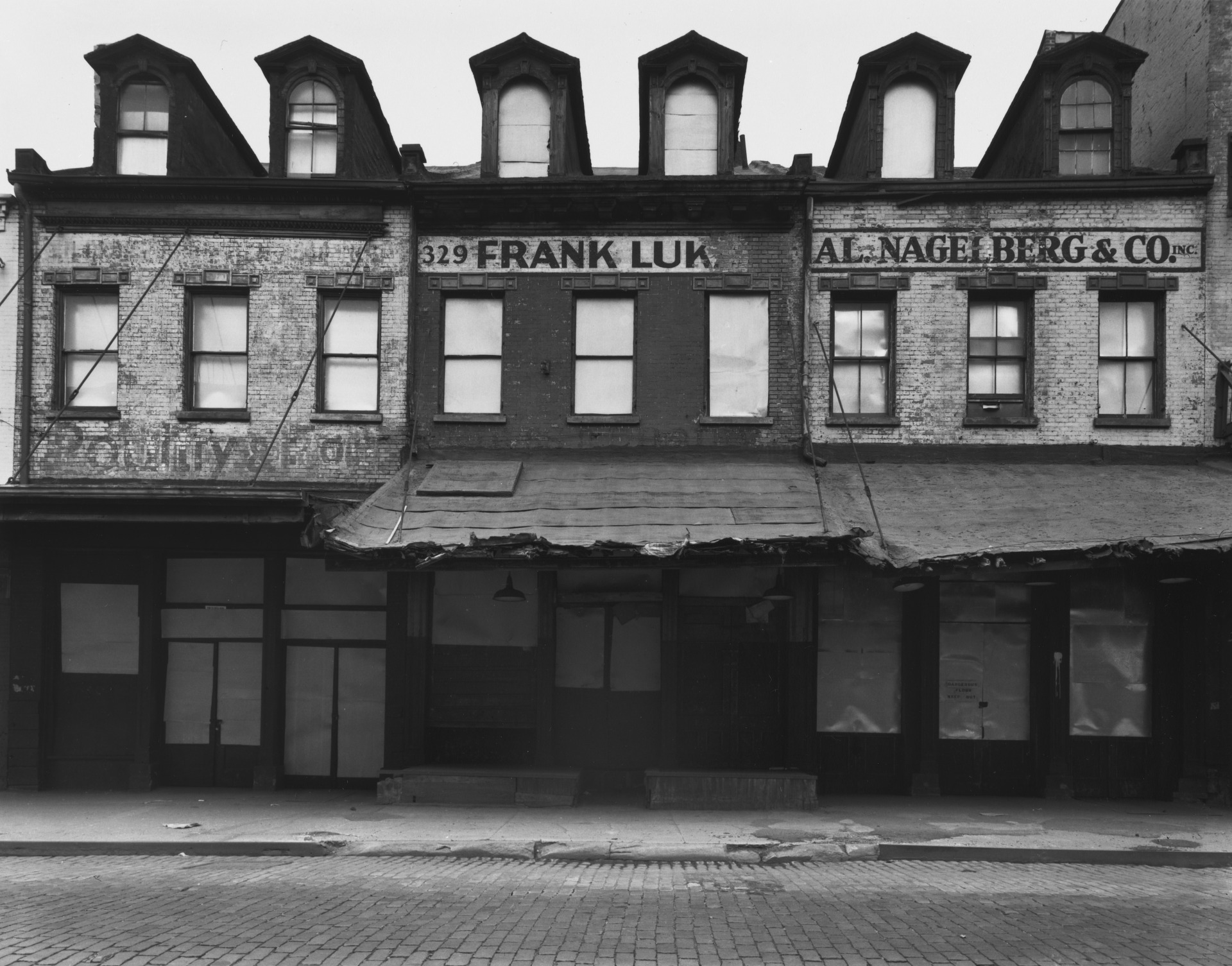
- Magazine Article
- Exhibitions
A Song of Destruction
Danny Lyon’s photographic eulogy to Lower Manhattan

Danny Lyon, already a respected photographer at age 25, returned to his hometown of New York in 1966 and settled in Lower Manhattan. After observing that half the buildings on his street were boarded up, he learned that his neighborhood was part of a 60-acre area slated for urban renewal—a wholesale leveling of several neighborhoods, including one of the city’s oldest. “The buildings, all doomed, spoke to me,” he wrote of this momentous transition, which became the subject of his project The Destruction of Lower Manhattan. “I was there to save them, to be witness, to pass on to the future, forever, what they looked like, at their best, alone in the light. Often, within a week or even days of my making the pictures, the buildings were demolished.”
The plans for redeveloping Lower Manhattan involved four parcels of land, including the site of the future World Trade Center. Lyon focused on two of these. On the east side, he captured the buildings and the “housewreckers” demolishing them within the 15-acre Brooklyn Bridge Southwest urban renewal area, now part of the Financial District. For more than a century, the neighborhood had been a center for the leather tanning, printing, and lithography trades. Its tenants, some of whom had been in business there for 70 years, were relocated. A total of 181 buildings would be torn down to allow expansion of Pace College and the construction of a new ramp for the Brooklyn Bridge.
On the west side, Lyon prowled the Washington Street Market urban renewal area, now part of Tribeca, along the Hudson River. More than two dozen blocks of deserted warehouses and businesses adjoined a once-bustling commercial port that had recently moved its cargo operations to a New Jersey site offering modern facilities and access for larger vessels. These mostly 19th-century buildings, wrote Lyon, “had been in continuous commercial use since before the Civil War.” Many were historically significant, especially the building at 258 Washington Street. Built in 1848 by architect-engineer James Bogardus (1800–1874), it was the first complete cast-iron building front erected in the United States, and thus an important forerunner of the modern steel-framed high-rise office building. Awarded landmark status, it was torn down anyway.

Historic preservation and adaptive reuse were of little interest to the developers, funders, and urban planners reshaping Lower Manhattan in the mid-1960s. The Downtown–Lower Manhattan Development Association’s appraisal of the land contrasts with Lyon’s. They saw it as “potentially valuable acreage [that] either lay idle or was under-utilized in block after block of low-rise, low-yield, decrepit structures housing marginal enterprises. A sorry network of rotting piers and primitive waterfront facilities ringing the perimeter completed the scene of economic waste and blight.”
Lyon envisioned images that both documented and eulogized their subjects. “As I see it now,” he wrote in a June 1967 diary entry, “I might weave a kind of song of destruction. The base of it would be a documentary record of buildings and blocks soon to be demolished and a record of demolition work. There will be portraits of housewreckers, and anyone left in the neighborhood. In a way, the entire project is sad; except for the demolition men and their work.”

As a photojournalist, Lyon was accustomed to using a 35mm camera. His series to date had examined Chicago’s Outlaws Motorcycle Club and the struggles of the civil rights movement in the South. Although he still used a 35mm for some shots in Manhattan, the buildings required perspective correction to avoid distortion. This necessitated the purchase of a view camera with a tripod, Lyon’s first. Exposure times are slow for these large, unwieldly cameras. The image is seen upside down, so composing the frame requires deliberation and numerous technical adjustments. The resulting photographs reflected the slower, more meditative nature of the process, offering complex yet orderly compositions. The empty streets and facades and even the portraits take on a stately presence, an authority that belies their ephemerality.
“I came to see the buildings as fossils of a time past,” wrote Lyon. “For a hundred years they have stood in the darkness and the day. . . . Now, in the end, they are visited by demolition men . . . pulling apart brick by brick and beam by beam the work of other American workers who once stood on the same walls and held the same bricks, then new, so long ago.”